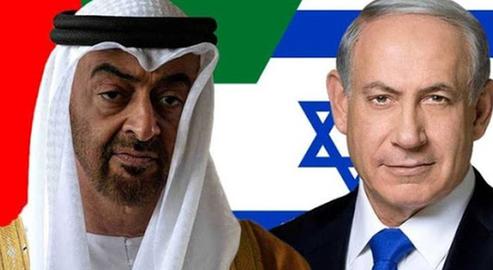Barely a month after Israel and the United Arab Emirates the full normalization of relations for the first time in the countries’ respective histories, it emerged that the two states have commenced talks on the future of a once-secret crude oil pipeline from the Mediterranean to the Red Sea.
The Eilat-Ashkelon pipeline was built in the late 1960s as a joint venture between Israel and Iran. It has a capacity of 600,000 barrels a day as well as almost 23 million barrels of storage space. Use of the pipeline has been hotly disputed since the Islamic Revolution of 1979, with the debates coming to a head in recent years. Now, following an agreement reached on Tuesday, October 20, a consortium of UAE companies will be able to use the pipeline to transport oil products from the Persian Gulf to Western markets.
During the Shah’s time this little-known, 254km work of infrastructure, otherwise known as the Trans-Israel pipeline or the Europe-Asia pipeline, was used to deliver Iranian oil to Europe. It was constructed in 1968, with Iran and Israel each holding a 50 per cent stake in the joint vehicle set up to manage it, the Eilat Ashkelon Pipeline Company.
At the time the Suez Canal had been the main route for the transportation of oil to Europe. But after the Suez Crisis of July 1956, in which Britain, France and Israel invaded Egypt over the nationalization of this vital waterway, the canal was kept closed until 1957. Because it bypassed the Suez Canal, Eilat-Ashkelon pipeline was Iran’s ticket to delivering oil to European markets faster, more reliably and without the need to pay transit fees.
By the time Mohamad Reza Shah was ousted in 1979, the Eilat-Ashkelon pipeline and its reservoir contained some 800,000 tons of Iranian crude oil, with a then-estimated value of 120 million dollars. Iran’s 50 per cent stake in the holding company, which had not been due to expire until 2016, was taken over by Israel and the fledgling Islamic Republic did not receive any payments for this oil.
For more than a decade, however, Iran’s new rulers never brought up the issue of compensation – because in revolutionary logic, this would be tantamount to recognizing Israel as a country, something the Islamic Republic continues to deny to this day. It wasn’t until 1991 that newly-anointed President Akbar Hashemi Rafsanjani directed his team to begin seeking compensation from Israel through the dispute resolution procedures set out in the Eilat Ashkelon Pipeline Company’s original governing charter.
Gudarz Eftekhar-Jahromi, the then-head of the Iranian presidency's Center for International Legal Affairs, questioned the move on behalf of the Supreme Leader. But as Rafsanjani would go onto write in his memoirs in 1997, “Once they realized that I had directed the team, they agreed. Israel claimed that the original debt was one billion dollars, but it was more than that.”
The Eilat Ashkelon Pipeline Company’s original contract had stipulated that the parties resolve any disputes by forming an arbitration group, which had to include one judge from the Supreme Court of Iran and one judge of the same stature from Israel. This group was then expected to suggest a resolution. If either of the parties did not agree, they could then take the case to the International Chamber of Commerce in Paris.
Israeli sources claimed that when Akbar Hashemi Rafsanjani’s government first brought up the matter of compensation, Israel’s energy minister at the time proposed that, as per the contract, a judge from the Supreme Court of Israel travel to Iran for discussions. But Tehran rejected the idea, citing Israel’s “illegitimacy”. The Islamic Republic instead made a counter-offer for the two judges to meet in a third country. But Israel rejected this in turn, stating that the original terms of the contract should be honored.
Finally, Iran was able to wrest a court order from Paris that required Israel to resolve the dispute. The two countries agreed to refer their case to the Swiss Federal Tribunal, with Iran finally filing a claim there in 2004, asking to be paid 800 million dollars plus damages. The court ruled in Iran’s favor and overruled repeated appeals from Israel, ultimately ordering Israel to pay almost $1.1 billion for the debt and related interest in June 2016. By this time, the JCPOA had been ratified by the US and Iran, with the Swiss court explicitly stating that sanctions were no longer an obstacle to the payment being made.
Officials for the Islamic Republic officials never confirmed or denied whether the dispute had been resolved to their satisfaction, or whether all the monies owed in the case had been received by Iran. But given that the UAE is now preparing to use the pipeline, it seems the Islamic Republic considers the case closed. In 1979, after Iran stopped using this facility, Israel extended it to support the transfer of oil in the reverse direction: from Russia and Azerbaijan to African and Asian markets, or rather, from north to south. Now, some 42 years later, the UAE has replaced Iran and the oil will flow from south to north once more.
visit the accountability section
In this section of Iran Wire, you can contact the officials and launch your campaign for various problems


























comments